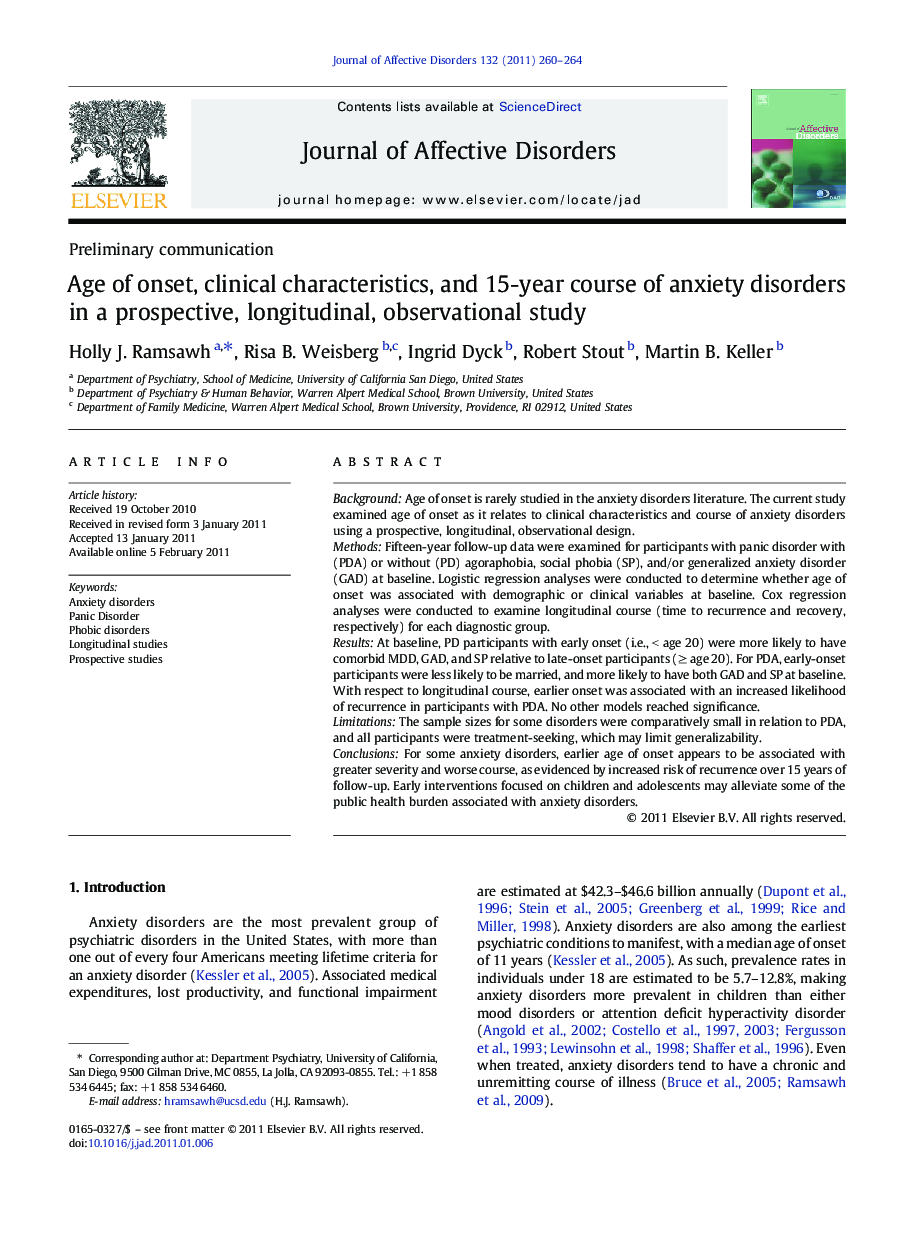| Article ID | Journal | Published Year | Pages | File Type |
|---|---|---|---|---|
| 6236148 | Journal of Affective Disorders | 2011 | 5 Pages |
BackgroundAge of onset is rarely studied in the anxiety disorders literature. The current study examined age of onset as it relates to clinical characteristics and course of anxiety disorders using a prospective, longitudinal, observational design.MethodsFifteen-year follow-up data were examined for participants with panic disorder with (PDA) or without (PD) agoraphobia, social phobia (SP), and/or generalized anxiety disorder (GAD) at baseline. Logistic regression analyses were conducted to determine whether age of onset was associated with demographic or clinical variables at baseline. Cox regression analyses were conducted to examine longitudinal course (time to recurrence and recovery, respectively) for each diagnostic group.ResultsAt baseline, PD participants with early onset (i.e., < age 20) were more likely to have comorbid MDD, GAD, and SP relative to late-onset participants (⥠age 20). For PDA, early-onset participants were less likely to be married, and more likely to have both GAD and SP at baseline. With respect to longitudinal course, earlier onset was associated with an increased likelihood of recurrence in participants with PDA. No other models reached significance.LimitationsThe sample sizes for some disorders were comparatively small in relation to PDA, and all participants were treatment-seeking, which may limit generalizability.ConclusionsFor some anxiety disorders, earlier age of onset appears to be associated with greater severity and worse course, as evidenced by increased risk of recurrence over 15 years of follow-up. Early interventions focused on children and adolescents may alleviate some of the public health burden associated with anxiety disorders.
